Hyla meridionalis
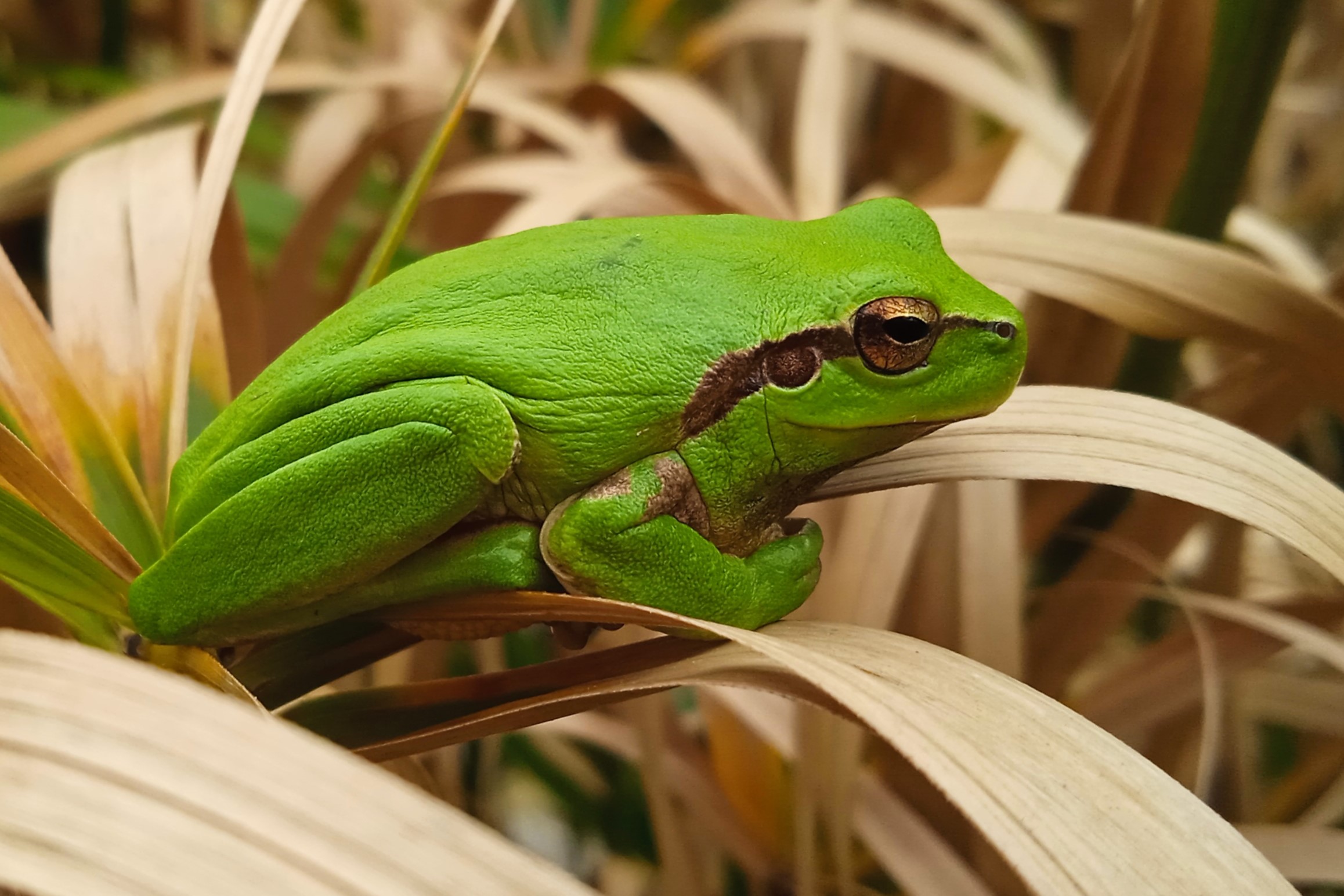

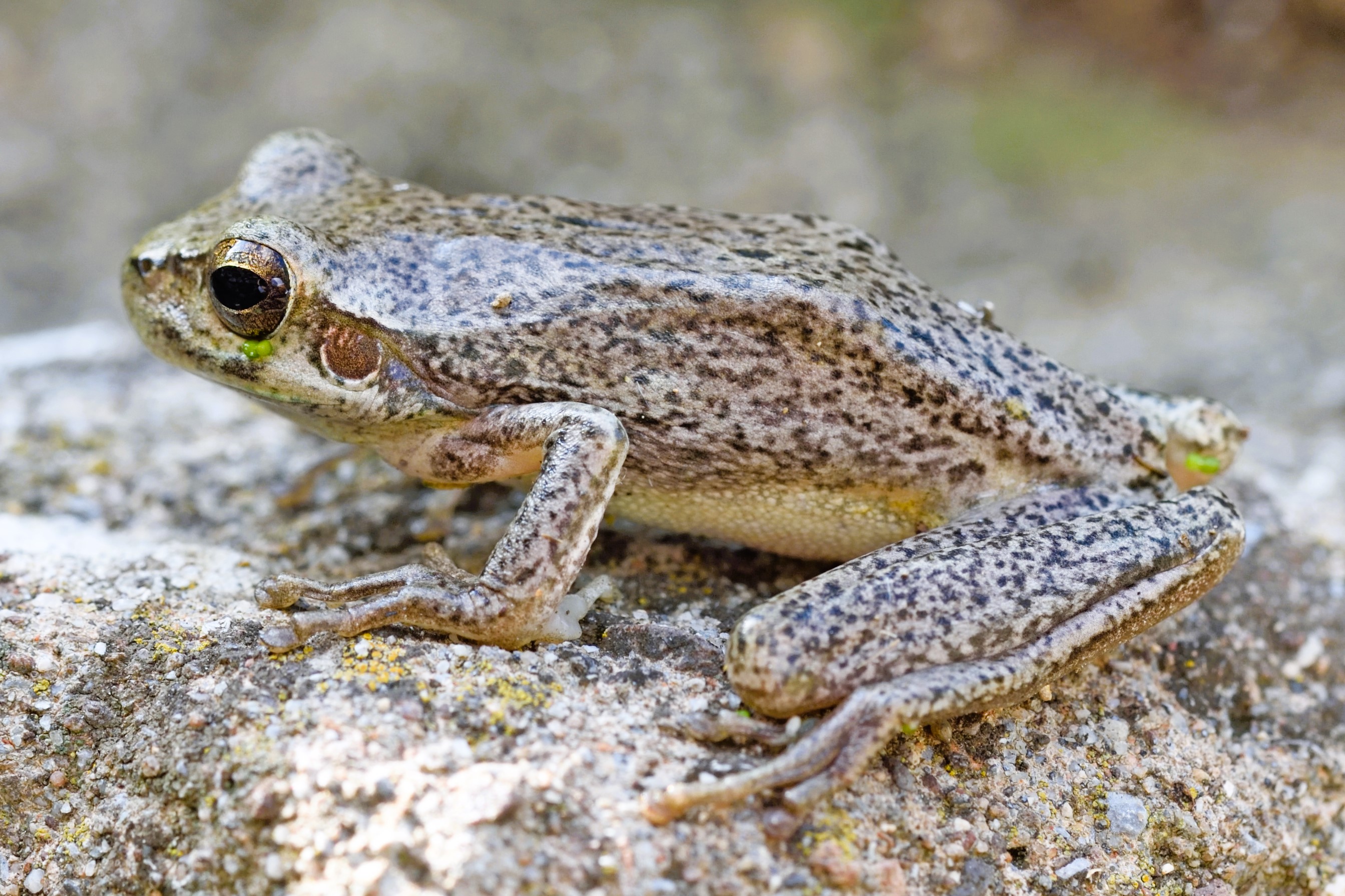
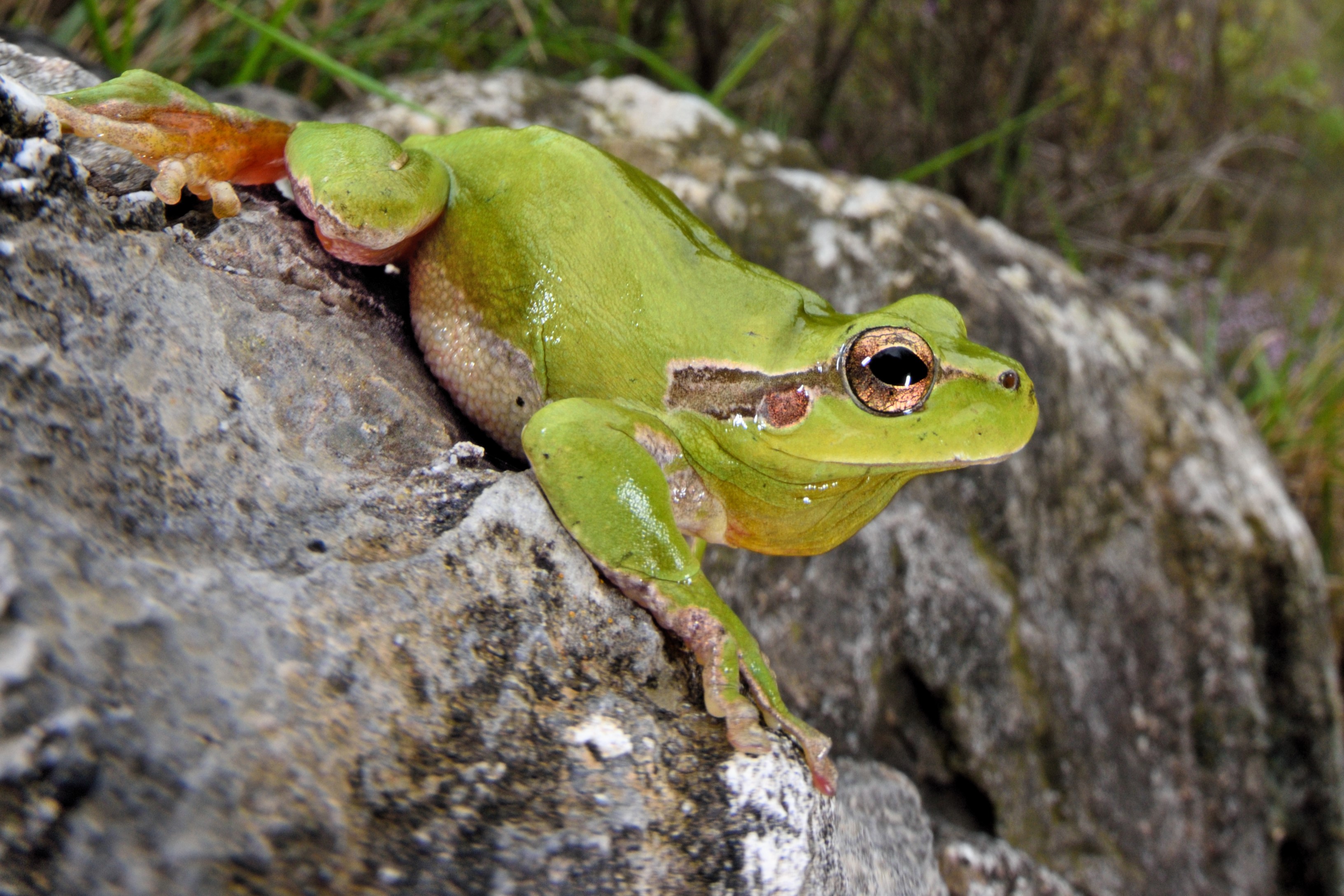
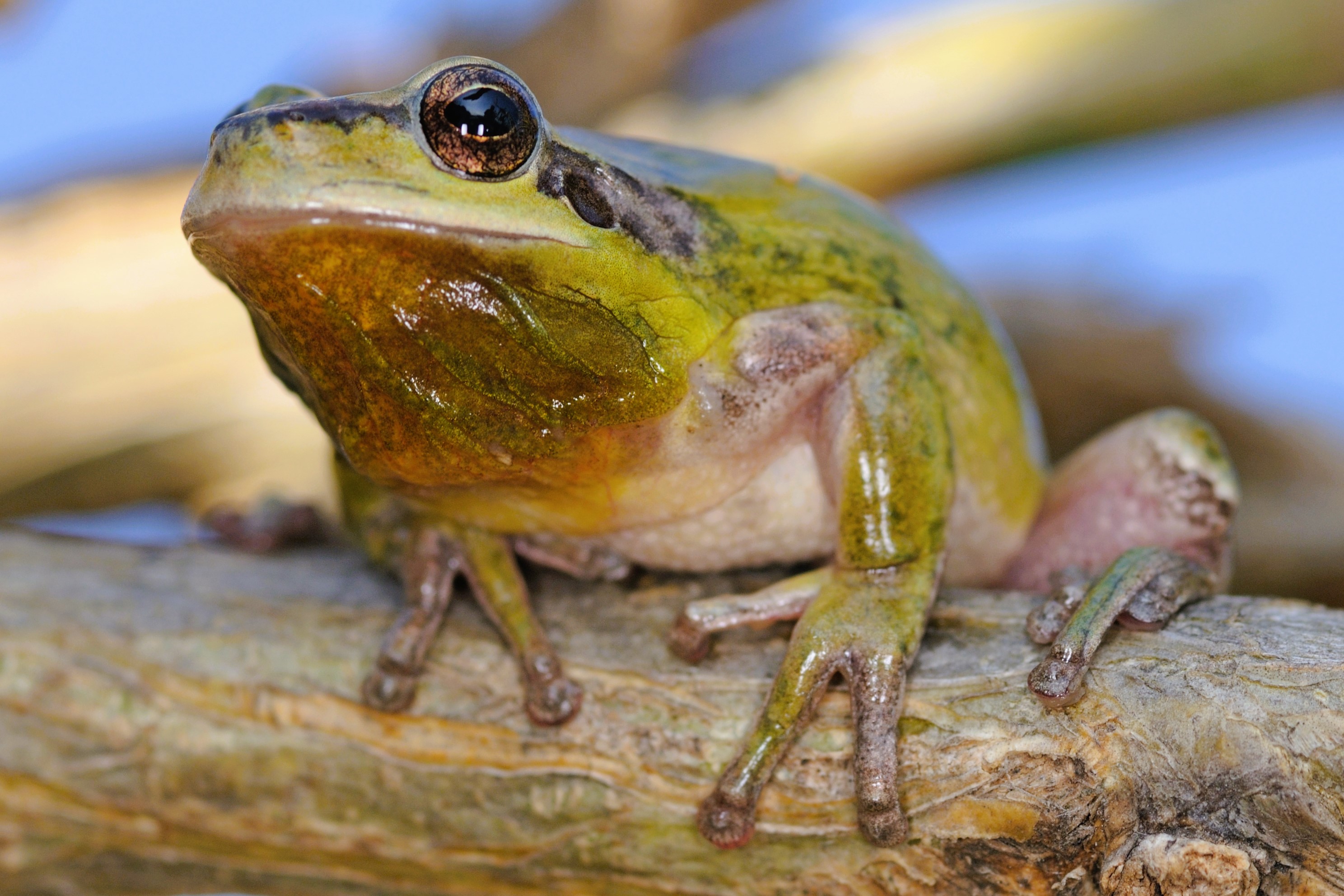
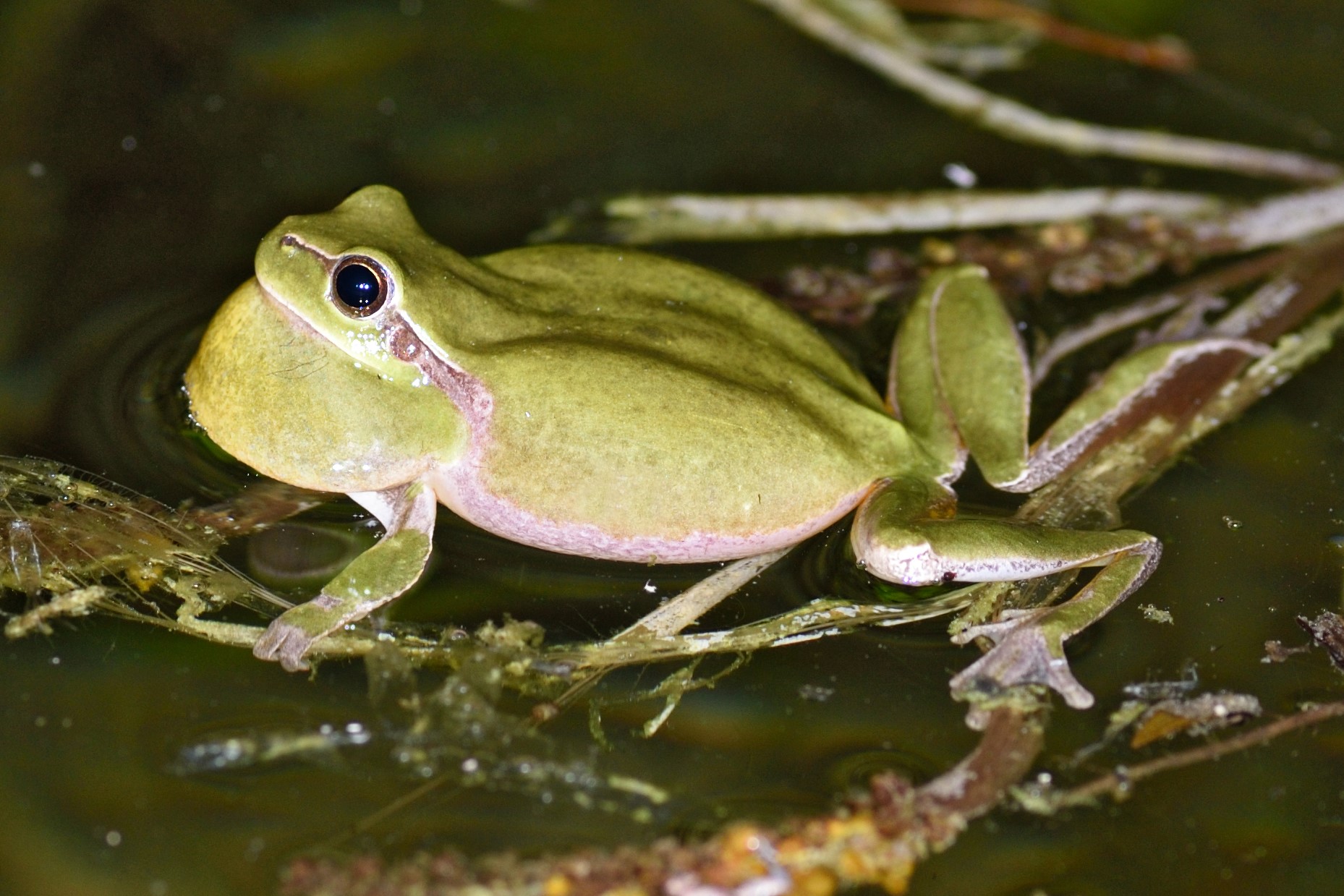
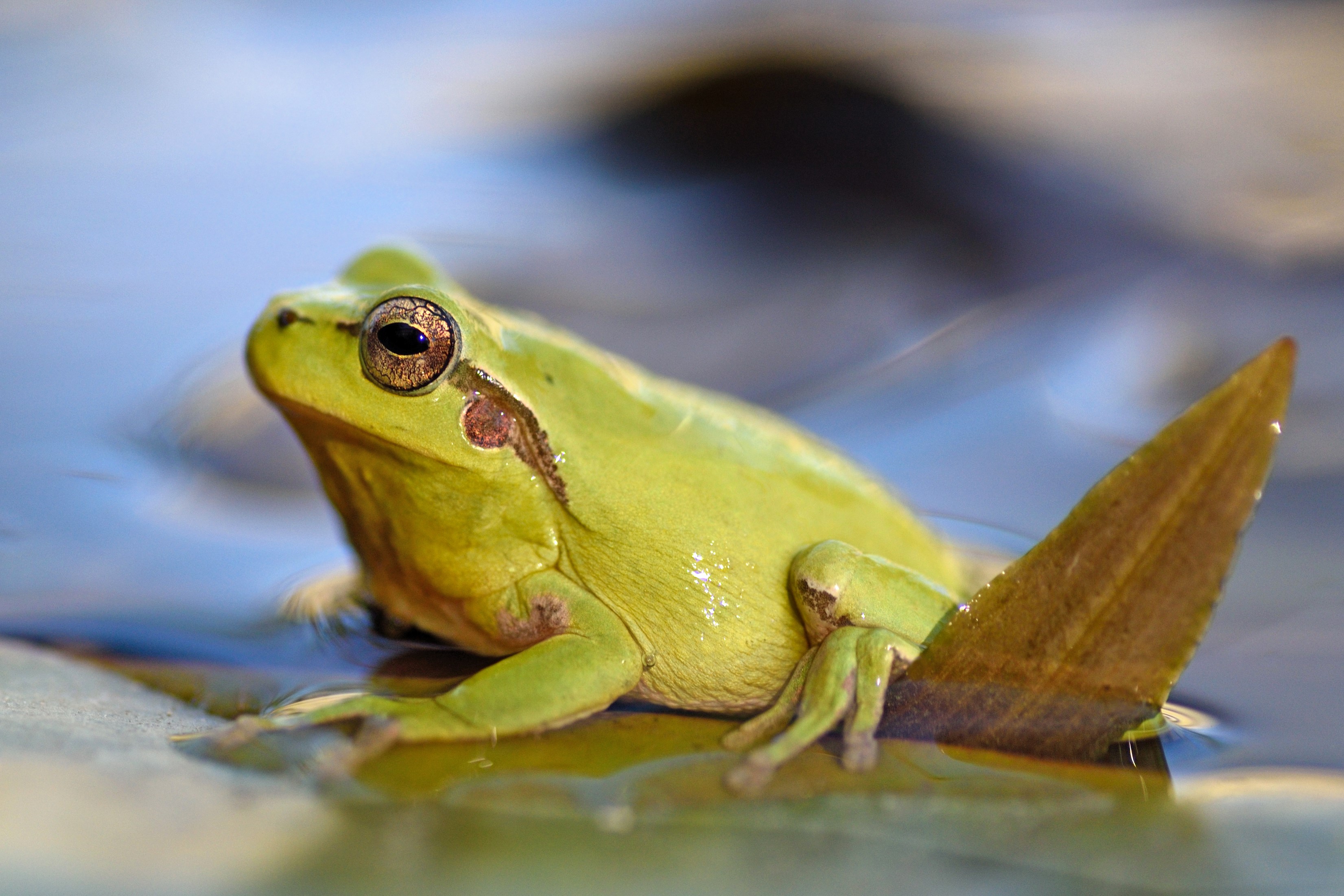
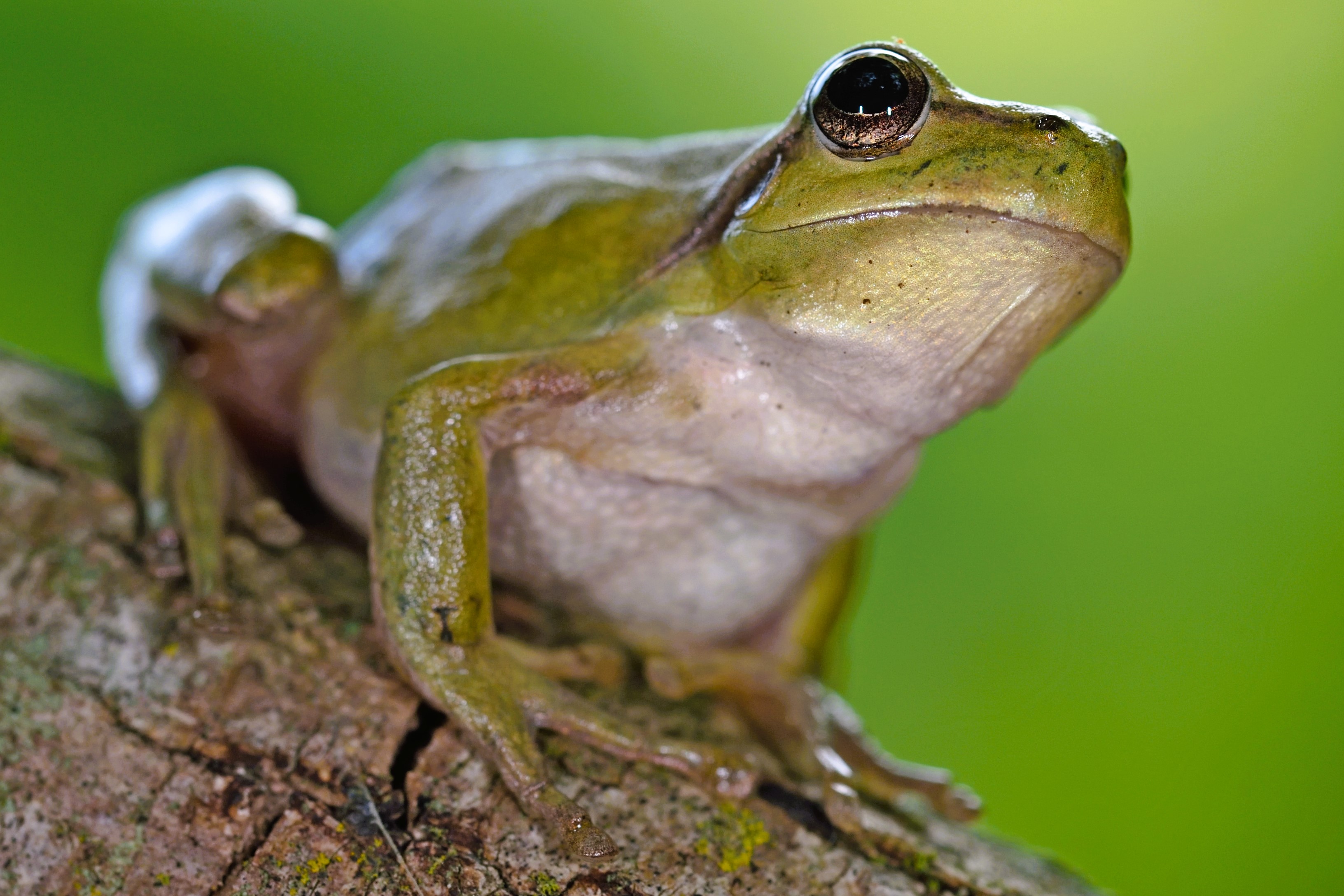
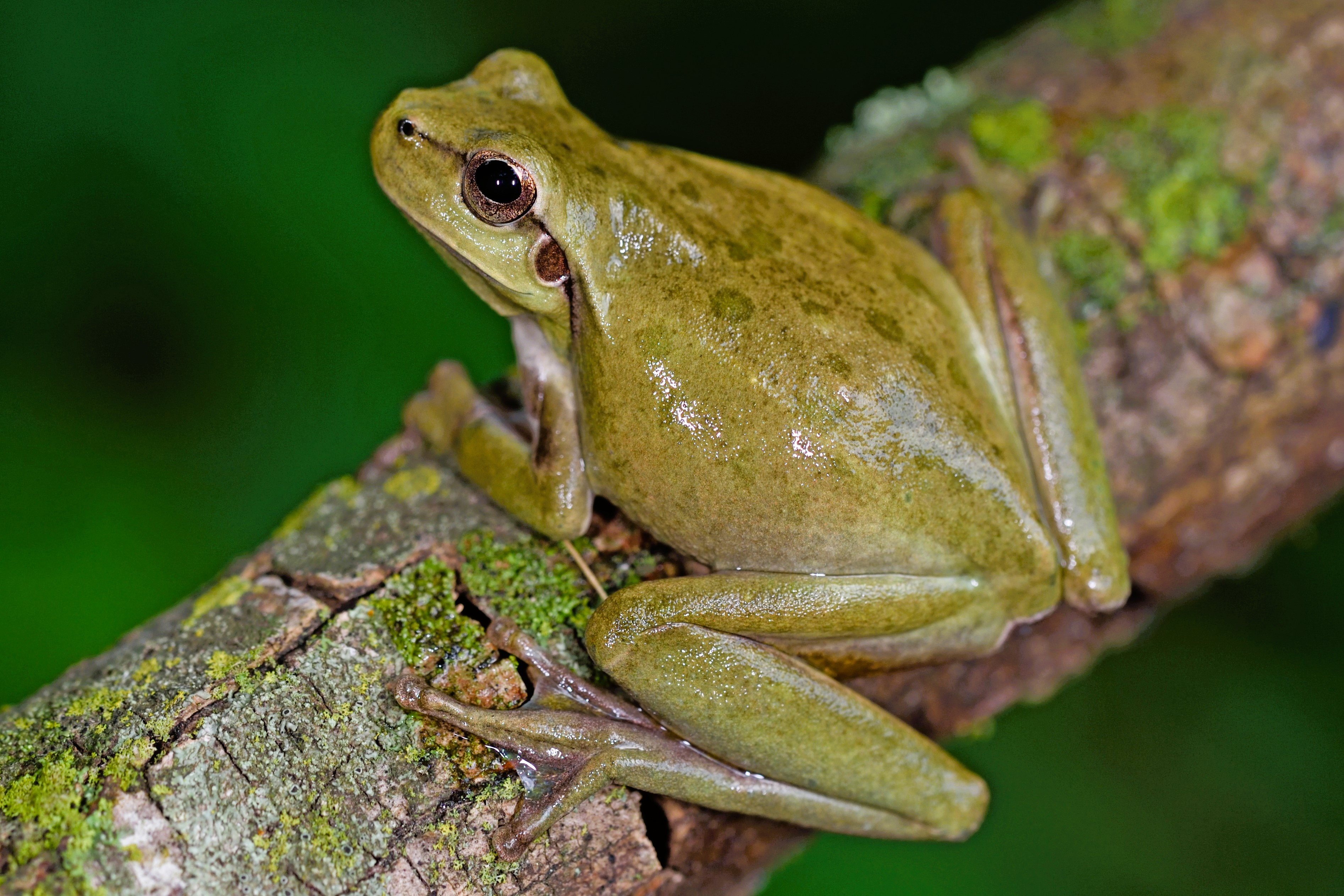
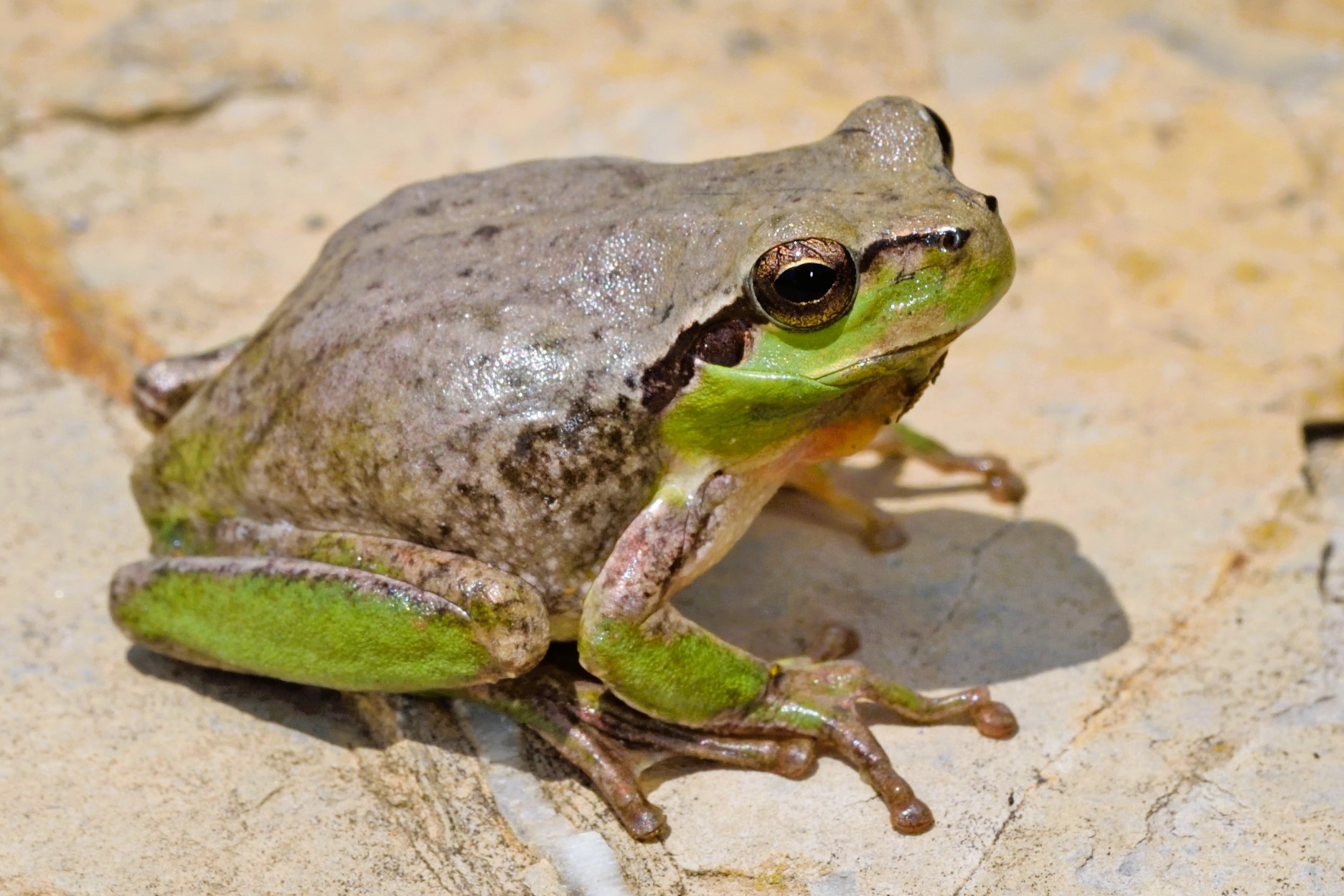
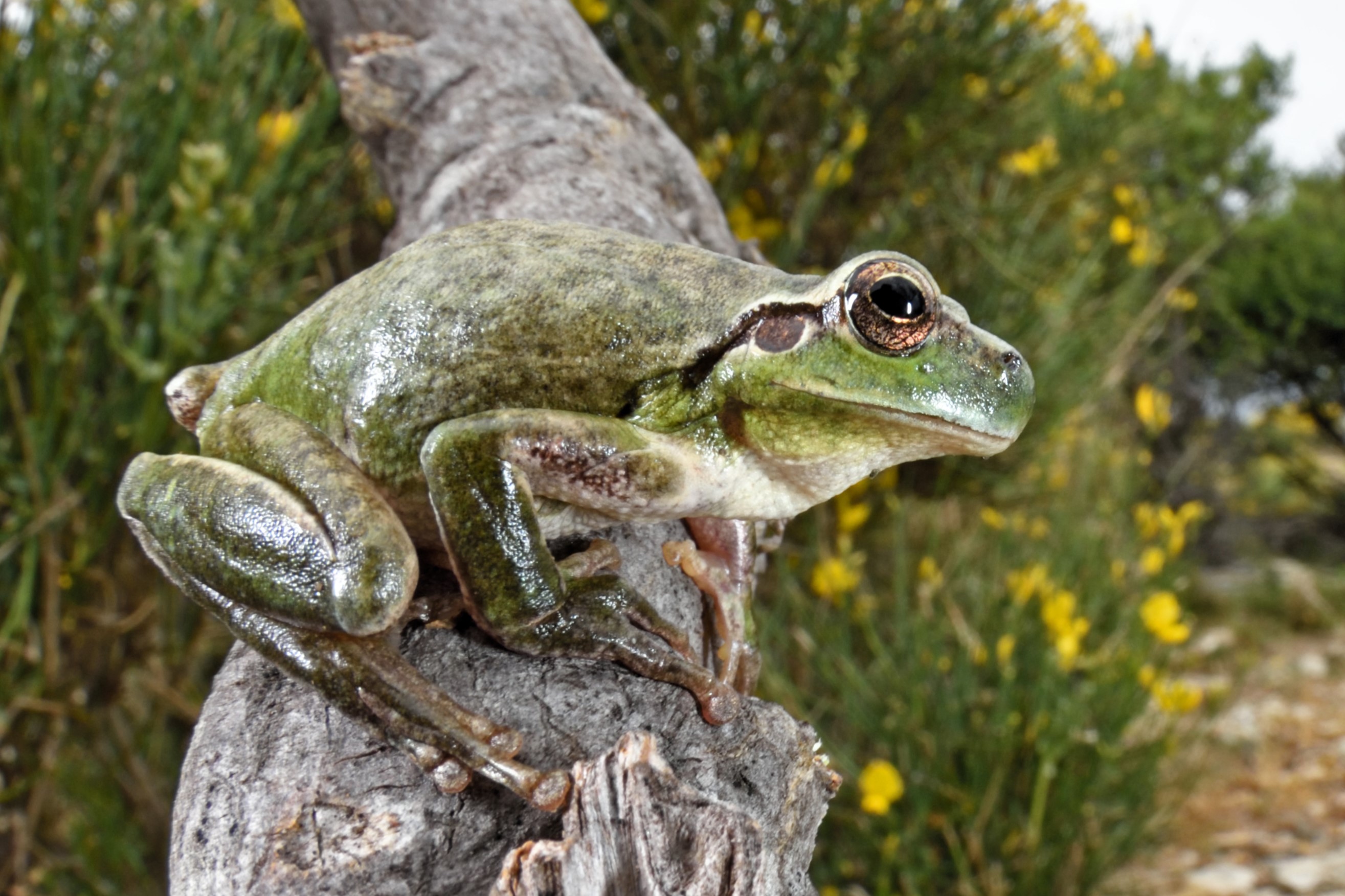
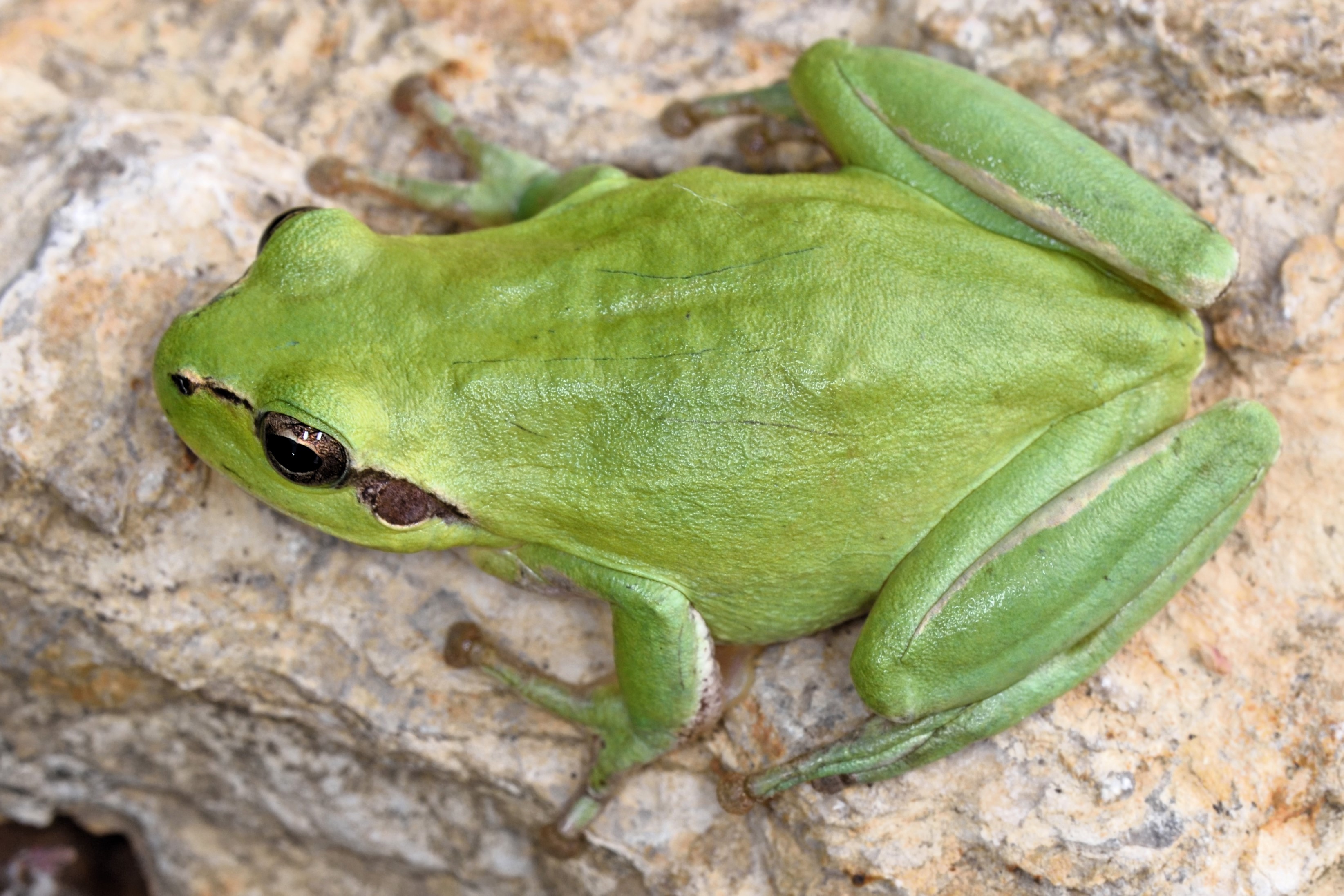
Amphibia → Anura → Hylidae → Hyla → Hyla meridionalis
Granögia zeneize
The Mediterranean Tree Frog ( Hyla meridionalis ) is a small anuran amphibian, easily recognized by its elegant, uniform bright green coloration, which ranges from light green to emerald shades.
One of the main distinguishing features compared to the Italian Tree Frog ( Hyla intermedia ) is the absence of a pronounced dark lateral stripe on its sides.
Adults have a slender body, long limbs, and fingers equipped with adhesive discs that facilitate movement through vegetation.
Males generally reach a length of 1.2–1.4 in (3–3.5 cm), while females are slightly larger, up to 1.6 in (4 cm).
During the breeding season, sexual dimorphism is evident in the males’ large, dark vocal sac and the presence of nuptial pads on their thumbs, while females are recognizable by their slightly larger size and the lack of a prominent vocal sac.
The tadpoles are brownish-green at hatching, about 0.2 in (5–6 mm) long, and over time develop a slender shape adapted to aquatic life.
In Western Liguria, the Mediterranean Tree Frog ( Hyla meridionalis ) is mainly found along the coastal and hilly zones, from sea level up to about 2,300 ft (700 m) elevation.
Its distribution is often fragmented and localized in the mildest areas of the Riviera di Ponente, where small clusters persist in certain coastal valleys.
The expansion and abundance of its populations depend on the availability of suitable habitats, which are now seriously threatened by ongoing urbanization and land transformation.
This species prefers humid environments characterized by the presence of:
The Mediterranean Tree Frog ( Hyla meridionalis ) exhibits a certain adaptability, also frequenting human-modified areas as long as there are water bodies and suitable vegetation.
Mainly crepuscular and nocturnal, the Mediterranean Tree Frog ( Hyla meridionalis ) takes advantage of the cooler hours of the day for its activities.
Its winter latency period is generally shorter compared to other local amphibians, aided by the mild climate of coastal areas.
The breeding season extends from March to June, when males produce melodious calls that are softer than those of the Italian Tree Frog ( Hyla intermedia ), attracting females to the oviposition sites.
Reproduction occurs in calm or slow-flowing waters rich in submerged vegetation, where females lay between 150 and 800 eggs in small clusters attached to the plants.
Metamorphosis is completed in about 2–3 months, depending on temperature and food availability.
The diet varies depending on the developmental stage:
These feeding habits help control insect populations in the frog’s habitats.
The main threats to the Mediterranean Tree Frog ( Hyla meridionalis ) in Western Liguria are:
Habitat fragmentation hinders the movement of individuals between breeding sites, threatening the survival of isolated populations.
The Mediterranean Tree Frog ( Hyla meridionalis ) stands out for its greater tolerance of partially anthropized environments compared to other amphibian species, even making use of tanks, springs, and temporary artificial water bodies.
Its call is among the most melodious of European herpetofauna.
It efficiently adapts to the climatic conditions of Mediterranean scrub, even managing to reproduce in waters with a modest level of salinity.
In Western Liguria, the species is under constant monitoring by scientific institutions and nature associations, which keep track of its health and risk of decline, recognizing it as a key indicator of the quality of coastal ecosystems and the presence of natural elements even in heavily urbanized settings.
Conserving the species requires strict protection of the remaining wetland areas and traditional farmlands, which serve as ecological corridors between populations.